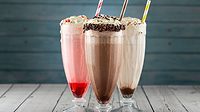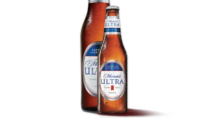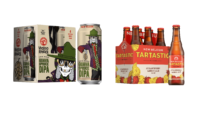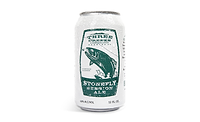In the sporting world, one of the most recent examples of growth and success has been the UFC. According to a June 3, 2016, Forbes report, the league generated $600 million in 2015, which was up from the $150 million it accrued in 2014. However, following the league’s $3.77 billion sale in 2016 to WME-IMG/Endeavor, sporting analysts at Forbes and other outlets have noted that the UFC took a step back in terms of annual pay-per-view buys in 2017.
In the beer market, a similar parallel to UFC’s rapid gains and recent deceleration would be craft beer. Small and independent U.S. craft brewers account for 12.3 percent of 2016 beer volumes, according to data from the Boulder, Colo.-based Brewers Association (BA). This is up from the beer segment’s 5.7 percent volume share in 2011. However, in the short term, the 2016 volume share was only up 0.1 percent from the previous year, based on the BA’s data.
In its June 2017 report titled “Beer in the US,” Chicago-based Euromonitor International points to various data points that have contributed to craft beer’s deceleration.
“Craft beer, long a driver of beer volumes, underwent what will undoubtedly be noted as the early stages of saturation in 2016,” the report states. “Although not explicitly researched or defined by Euromonitor International, ale, weissbier/weizen/wheat beer and stout, the Euromonitor International-defined categories where craft beers are most prominent, recorded combined total volume growth of just 2 percent in 2016.
“This slowed growth of craft-dominated categories affected the overall performance of beer in the U.S., which posted a flat performance in total volume terms in 2016, compared to growth at a 1 percent [compound annual growth rate] over the review period,” it continues. “Although substantial consumer interest in the U.S. craft beer market remained, the proliferation of brewers and the offerings they produce quenched consumers’ thirst for well-crafted beers, ushering in a new era of competition.”
(Brand family)
| DOLLAR SALES | % CHANGE VS. PRIOR YEAR | CASE SALES | % CHANGE VS. PRIOR YEAR | |
| Blue Moon | $340,843,290 | 1.7 | 10,261,098 | 0 |
| Samuel Adams | $275,847,913 | -16.2 | 8,258,104 | -15.9 |
| Sierra Nevada | $243,334,382 | -5.1 | 7,064,796 | -6.2 |
| New Belgium | $207,891,168 | 6.3 | 5,984,015 | 5.3 |
| Lagunitas | $180,399,324 | 9.6 | 4,648,061 | 9.6 |
| Leinenkugel Specialty | $179,787,195 | 6.8 | 5,749,245 | 4.5 |
| Shiner | $136,143,573 | 0.7 | 4,079,783 | -0.6 |
| Shock Top | $111,350,961 | -17.9 | 3,654,805 | -19.2 |
| Founders | $78,609,735 | 42.6 | 2,447,932 | 51.8 |
| Goose Island | $76,115,164 | 5.1 | 2,136,379 | -0.5 |
| Total sales* | $4,051,678,802 | 5.6 | 109,601,610 | 3.6 |
Source: Information Resources Inc. (IRI), Chicago. Total U.S. supermarkets, drug stores, gas and convenience stores, mass merchandisers, military commissaries, and select club and dollar retail chains for the 52 weeks ending Dec. 31, 2017.
Among the ways that craft brewers are looking to return to its years of notable growth is through new product innovations, particularly with sessionable beers.
“The biggest consumption hurdle for craft beer is the full body and heavier flavors fill one up quickly,” says Brian Sudano, managing partner with New York-based Beverage Marketing Corporation (BMC). “As a result, it limits usage occasions and the amount one can drink per occasion. Sessionable beer addresses usage occasions, e.g., refreshment and ability to drink more per sitting (lower alcohol and calories facilitate this). An additional benefit is its appeal to women as they tend to have a predisposition against heavily bitter beers.”
Samuel Adams, a brand of Boston-based The Boston Beer Co., addressed this need state with its newest beer: Sam ’76. At 4.7 percent alcohol by volume, Sam ’76 unites two styles for a beer that delivers the flavor and character of an ale with the clean, crisp finish of a lager, the company says.
“We’ve brewed a revolutionary beer that brings together the best attributes of lager and ale with a taste and aroma that will completely surprise any craft beer drinker,” said Jim Koch, founder and brewer for The Boston Beer Co., in a statement.
Milwaukee-based Lakefront Brewery is addressing sessionable offerings as well as consumers’ desire for more flavorful options. Available this month, Eazy Teazy is Lakefront’s lightest and lowest-calorie beer with just 99 calories in a 12-ounce can.
“The market’s been focused on hopped up IPAs and higher [alcohol-by-volume] beers, such as our barrel-aged stouts,” said Russ Klisch, owner and president of Lakefront Brewery, in a statement. “But there’s a shift happening toward easier-drinking, session craft beers. Eazy Teazy is clean, crisp and light with citrus notes from the Lemondrop hops and a subtle green tea finish.”
Another bright spot for craft beer has been the performance of regional brewers. Analysts note that although craft brewers that have a national presence have experienced a mixed bag of results, the faction of smaller-footprint brands remains on an upward trajectory.
“Hyper-local [brewers] and tap rooms are driving fragmentation and increase in on-premise mix resulting in national and large regional brands’ flattish volume growth and greater fragmentation,” BMC’s Sudano says.
Analysts also point to the type of ingredients that brewers are using and deregulation as factors that are helping to benefit the craft beer segment.
“Craft beers are typically produced in local microbreweries, which boast quality ingredients, a high degree of expertise and attention to detail,” says Chrystalleni Stivaros, lead analyst with Los Angeles-based IBISWorld. “While the craft beer craze has been fueled by changing consumer tastes, the deregulation of intrastate alcohol distribution and retail laws has also significantly contributed to its surging growth.” BI







